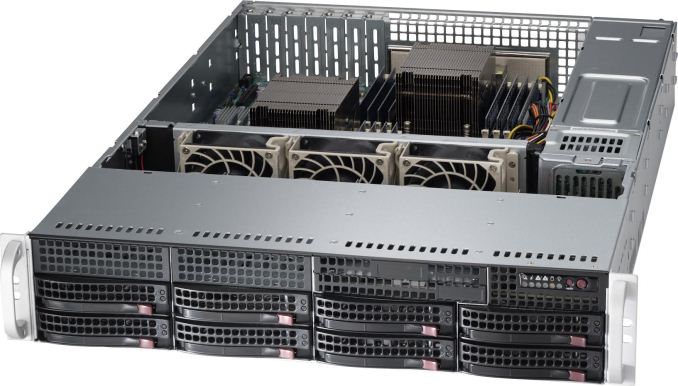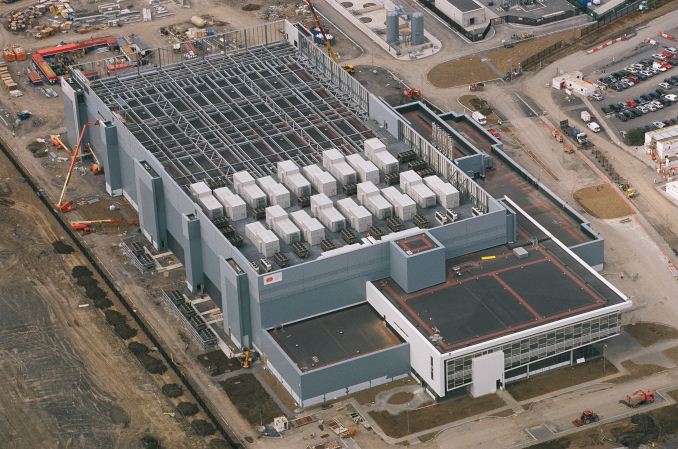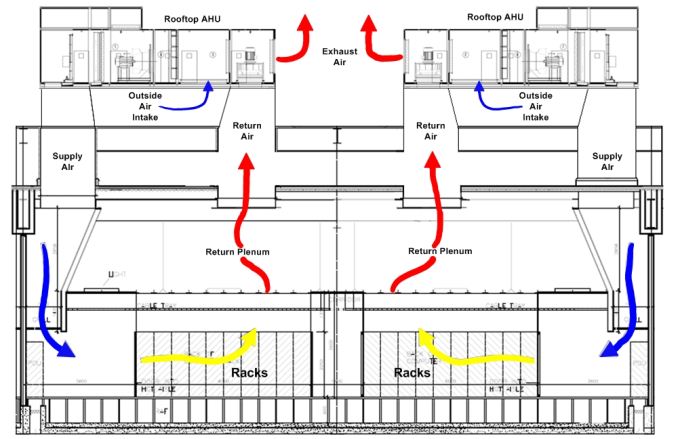Free Cooling: the Server Side of the Story
by Johan De Gelas on February 11, 2014 7:00 AM EST- Posted in
- Cloud Computing
- IT Computing
- Intel
- Xeon
- Ivy Bridge EP
- Supermicro

Data centers are the massive engines under the hood of the mobile internet economy. And it is no secret that they demand a lot of energy: with energy capacities ranging from 10MW to 100MW, they require up to 80,000 times more than what a typical US home needs.
And yet, you do not have to be a genius to figure out how the enormous energy bills could be reduced. The main energy gobblers are the CRACs, Computer Room Air Conditioners or the alternative, the CRAHs, the Computer Room Air Handlers. Most data centers still rely on some form of mechanical cooling. And to the outsider, it looks pretty wasteful, even stupid, that a data center is consuming energy to cool servers down while the outside air in a mild climate is more than cold enough most of the time (less than 20°C/68 °F).
Free cooling
There are quite a few data centers that have embraced "free cooling" totally, i.e. using the cold air outside. The data center of Microsoft in Dublin uses large air-side economizers and make good use of the lower temperature of the outside air.
Microsoft's data center in Dublin: free cooling with air economizers (source: Microsoft)
The air side economizers bring outside air into the building and distribute it via a series of dampers and fans. Hot air is simply flushed outside. As mechanical cooling is typically good for 40-50% of the traditional data center's energy consumption, it is clear that enormous energy savings can be possible with "free cooling".
Air economizers in the data center
This is easy to illustrate with the most important - although far from perfect - benchmark for data centers, PUE or Power Usage Effectiveness. PUE is simply the ratio of the total amount of energy consumed by the data center as a whole to the energy consumed by the IT equipment. Ideally it is 1, which means that all energy goes to the IT equipment. Most data centers that host third party IT equipment are in the range of 1.4 to 2. In other words, for each watt consumed by the servers/storage/network equipment, 0.4 to 1 Watt is necessary for cooling, ventilation, UPS, power conversion and so on.
The "single-tenant" data centers of Facebook, Google, Microsoft and Yahoo that use "free cooling" to its full potential are able to achieve an astonishing PUE of 1.15-1.2. You can imagine that the internet giants save massive amounts of energy this way. But as you have guessed, most enterprises and "multi-tenant" data centers cannot simply copy the data center technologies of the internet giants. According to a survey of more than 500 data centers conducted by The Uptime Institute, the average Power Usage Effectiveness (PUE) rating for data centers is 1.8. There is still a lot of room for improvement.
Let's see what the hurdles are and how buying the right servers could lead to much more efficient data centers and ultimately an Internet that requires much less energy.












48 Comments
View All Comments
iTzSnypah - Tuesday, February 11, 2014 - link
I wonder why nobody has tried geothermal liquid cooling. You could do it 2 ways. Either with a geothermal heat pump set up or cut out the middle man and just use the earth like you would a radiator in a liquid cooling loop. The only problem would be how many wells you would have to drill to cool up to 100MW (I'm thinking 20+ at a depth of at least 50ft).ShieTar - Tuesday, February 11, 2014 - link
Its kind of easier to just use a nearby river than dig for and pump up ground water. That's what power stations and big chemical factories do. For everybody else, air-cooling is just easier and less expensive.iTzSnypah - Tuesday, February 11, 2014 - link
You wouldn't be drilling for water. You drill a well so you can put pipe in it, fill it back up and then pump water through the pipes using the earth's constant temp (~20c) to cool your liquid which is warmer (>~30c).looncraz - Tuesday, February 11, 2014 - link
I experimented with this (mathematically) and found that heat soak is a serious, variable, concern. If the new moisture is coming from the surface, this is not as much of an issue, but if it isn't, you could have a problem in short order. Then there are the corrosion and maintenance issues...The net result is that it is cheaper and easier to just install a few ten thousand gallon coolant holding tanks and keep them cool (but above ambient) and to cool the air in the server room(s). These tanks can be put inside a hill or in the ground for extra installation and a surface radiator system could allow using cold outside air to save energy.
superflex - Wednesday, February 12, 2014 - link
You obviously dont know have a clue about drilling costs.For a 2,000 s.f. home, a geothermal driller needs between 200-300 lineal feet of well bore to cool the house. In unconsolidated material, drilling costs per foot range from $15-$30/foot, depending on the rig. For drilling in rock, up the cost to $45/foot.
For something that uses 80,000x more power than a typical home, what do you think the drilling costs would be?
Go back to heating up Hot Pockets.
chadwilson - Wednesday, February 19, 2014 - link
That last statement was totally unnecessary. Your perfectly valid point was tarnished by your awful attitude.nathanddrews - Tuesday, February 11, 2014 - link
Small scale, but really cool. Use PV to power your pumps...http://www.overclockers.com/forums/showthread.php?...
Sivar - Tuesday, February 11, 2014 - link
Geothermal heat pumps are only moderately more efficient than standard air conditioning and require an enormous amount of area. 20 holes at a depth of 50ft would handle the cooling requirements for a large residential home, but wouldn't even approach the requirements for a data center.One related possibility is to drill to a nearby aquifer and draw cool water, run it through a heat exchanger, then exhaust warm water into the same aquifer. Unfortunately, water overuse has been drained aquifers such that even the pumping costs would be substantial, and the aquifers will eventually be drained to the point that vacuum-based pumps can no longer draw water.
rkcth - Tuesday, February 11, 2014 - link
They are a lot more efficient at heating, but only mildly more efficient at cooling. They also are really storing heat in the ground in the summer and taking it back in the winter, so if you only store heat you can actually have a problem long-term. Your essentially using the ground as a long-term heat storage device since the ground is between 50-60 degrees depending on your area of the country, but use of the geothermal changes that temperature. An air source makes much more sense since you share the air with everyone else and it essentially just blows away.biohazard918 - Tuesday, February 11, 2014 - link
Wells don't use vacuum based pumps most aquifers are much to deep for that instead you stick the pump in the bottom of the well and push the water to the service.